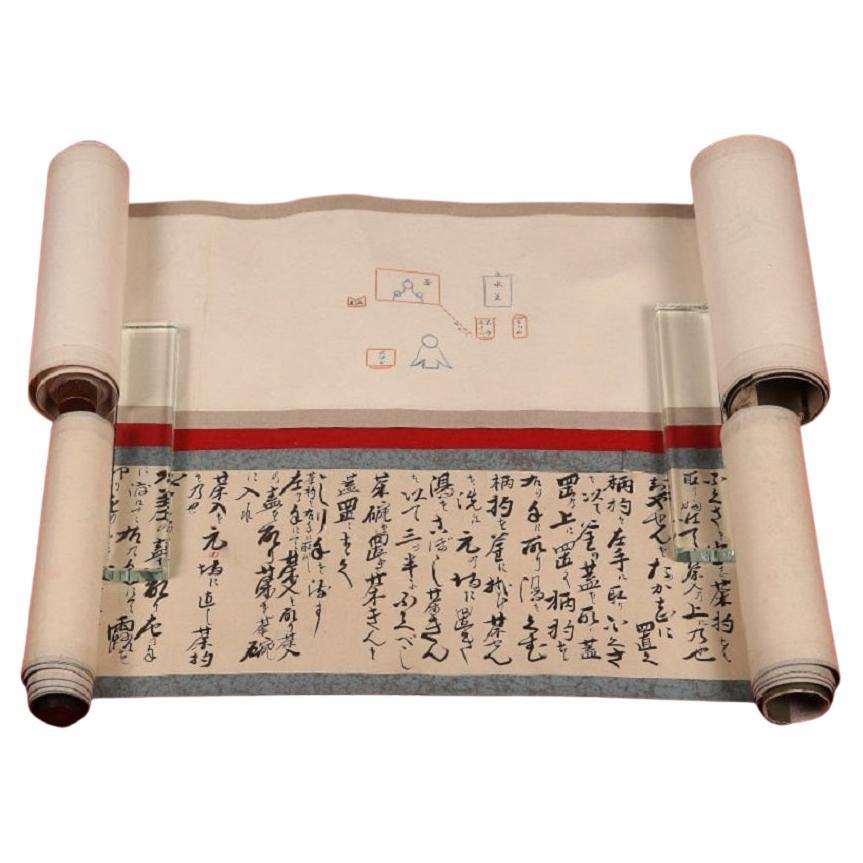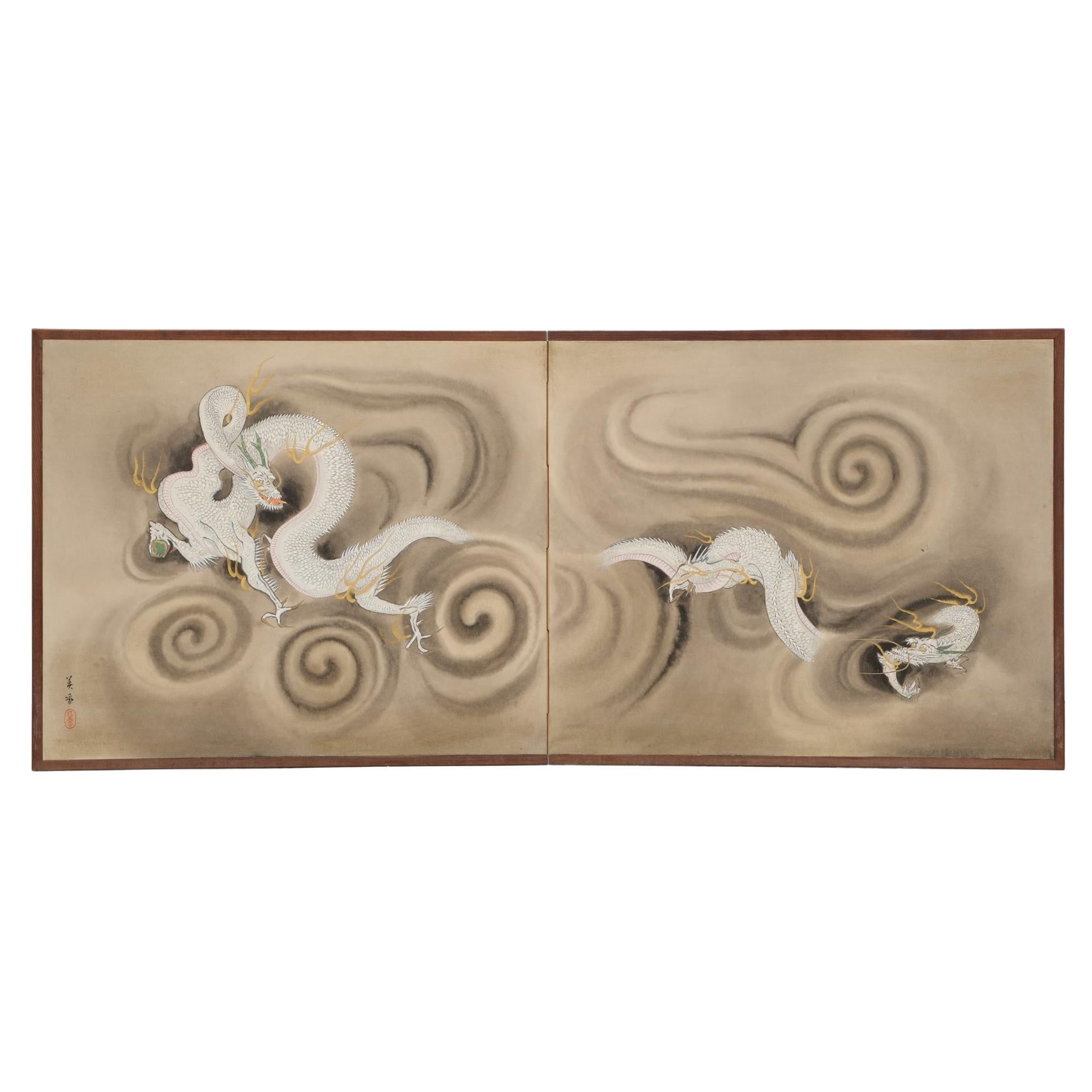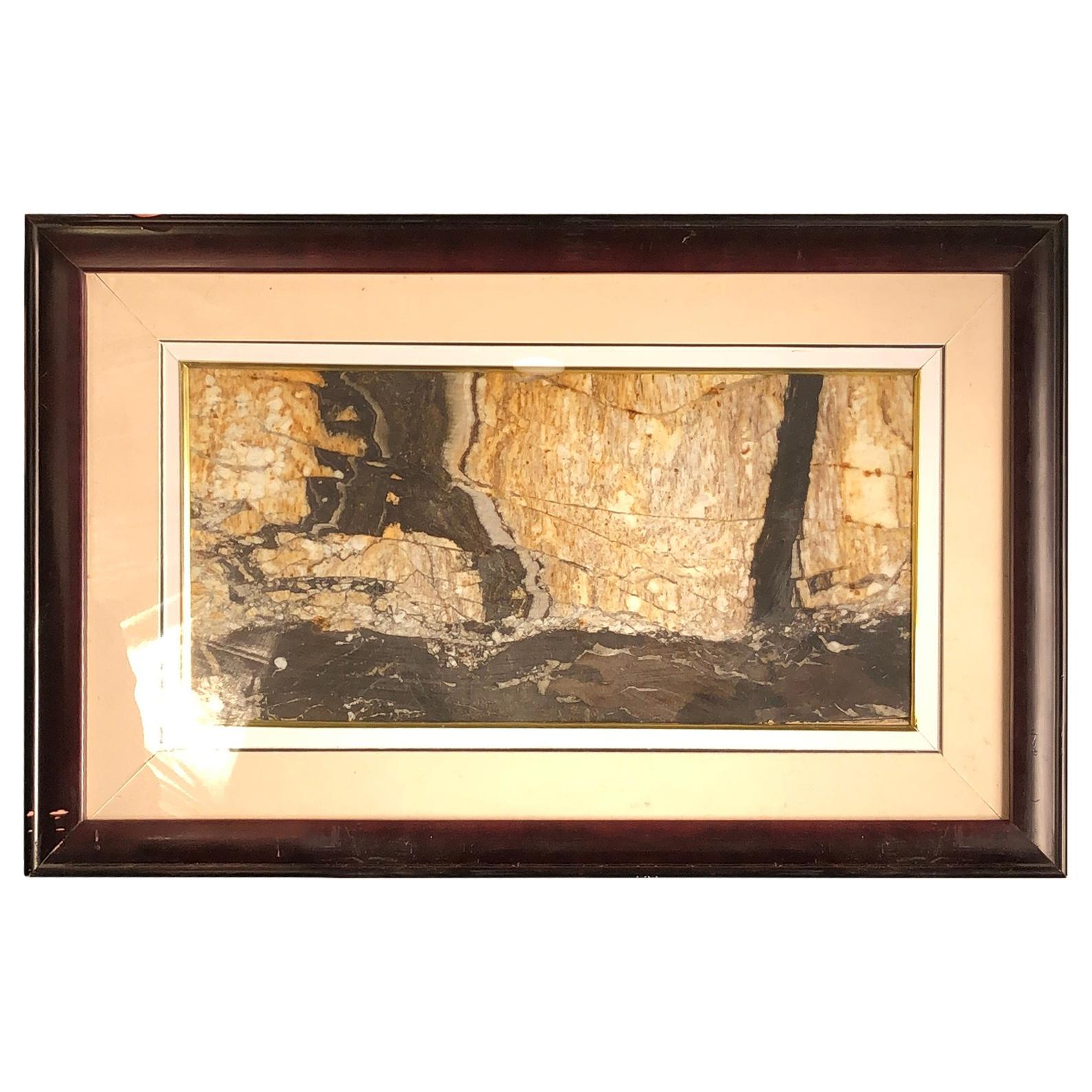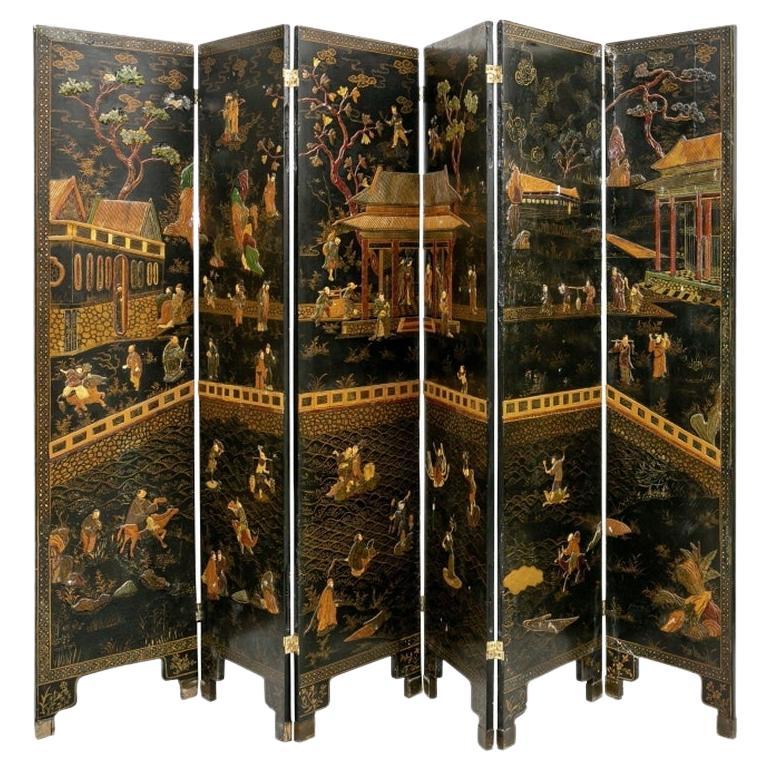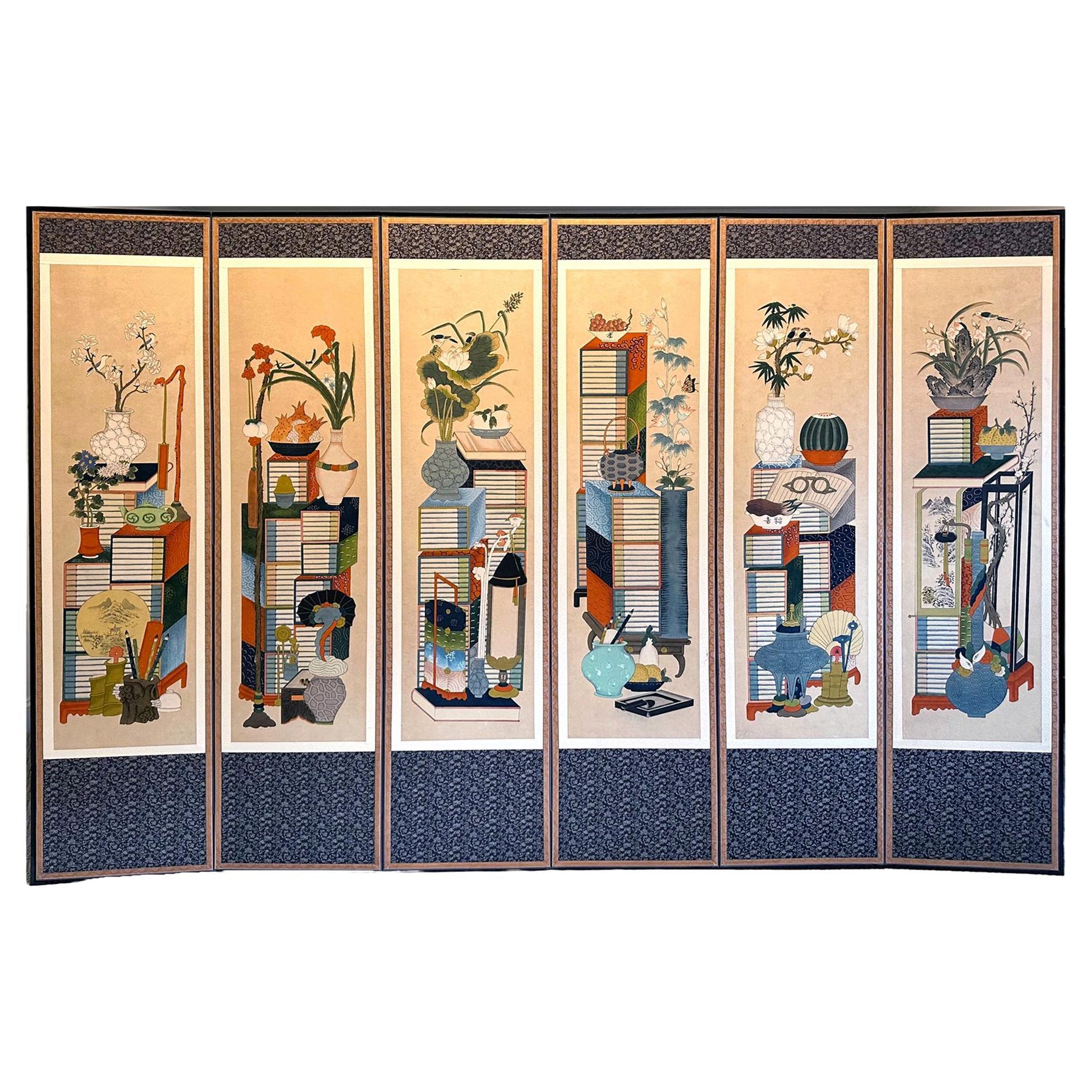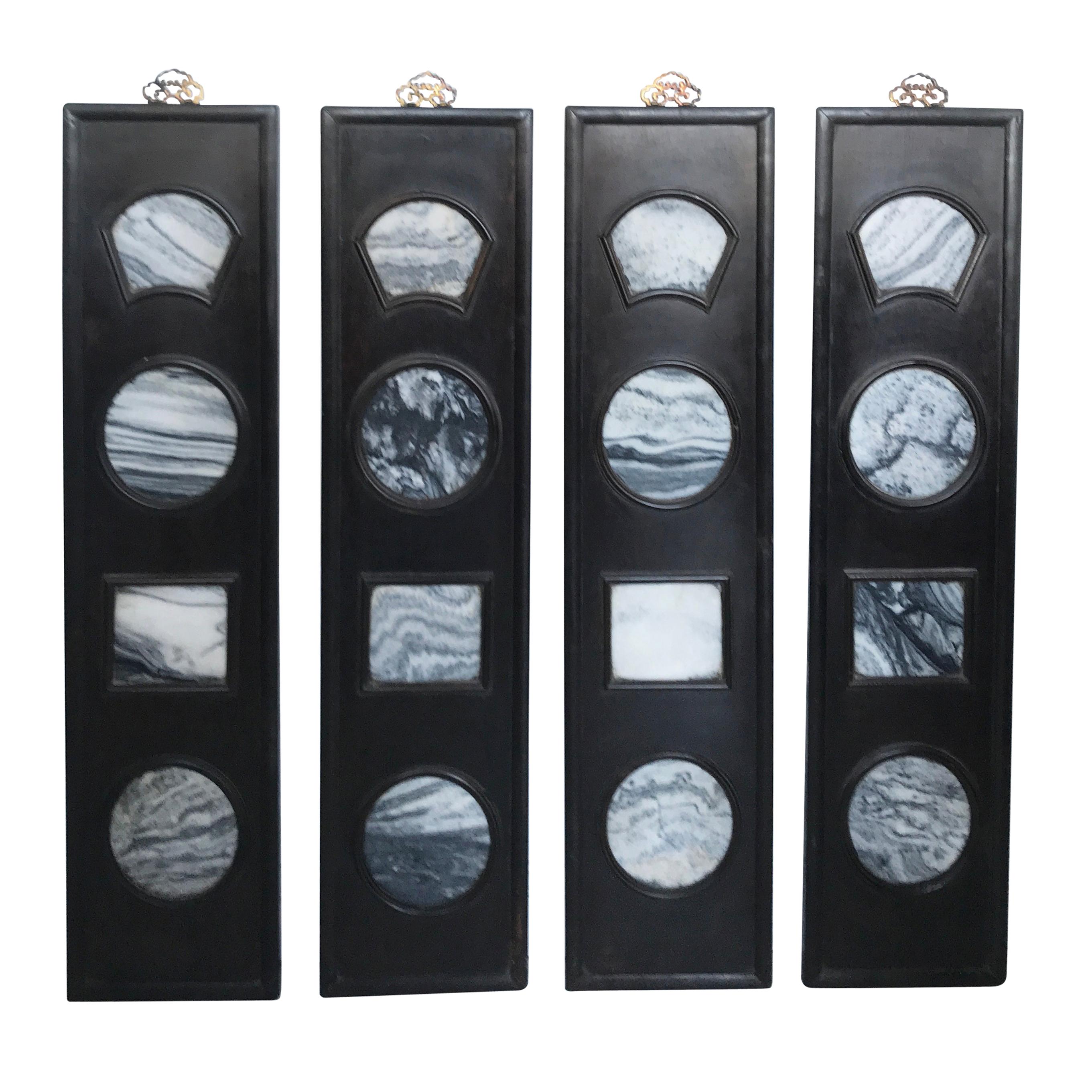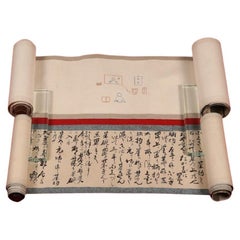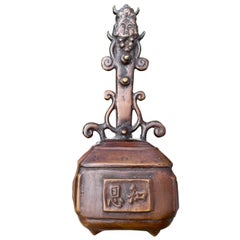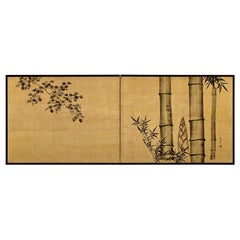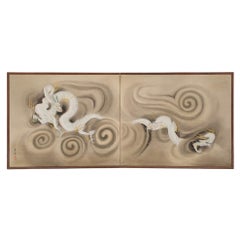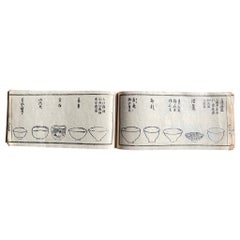
Japan Antique Tea Guide Chado Ceremony Woodblock Prints Book 1850
View Similar Items
Want more images or videos?
Request additional images or videos from the seller
1 of 17
Japan Antique Tea Guide Chado Ceremony Woodblock Prints Book 1850
About the Item
- Dimensions:Height: 3.25 in (8.26 cm)Width: 7 in (17.78 cm)Depth: 0.5 in (1.27 cm)
- Style:Edo (Of the Period)
- Materials and Techniques:
- Place of Origin:
- Period:
- Date of Manufacture:1850
- Condition:Wear consistent with age and use.
- Seller Location:South Burlington, VT
- Reference Number:1stDibs: LU1289225170752
About the Seller
5.0
Gold Seller
These expertly vetted sellers are highly rated and consistently exceed customer expectations.
Established in 1990
1stDibs seller since 2015
2,214 sales on 1stDibs
Typical response time: 1 hour
More From This SellerView All
- Japan Antique Tea Master Ceremony Guide Double Scroll Matsudara Fumai 1751-1818Located in South Burlington, VTFrom our most recent Japanese acquisitions Rare Hand-Painted Double Tea Master Scroll (2) entitled: Tea Ceremony Rules of Matsudaira Fumai (1751-1818) Includes a later wooden col...Category
Antique 19th Century Japanese Edo Paintings and Screens
MaterialsPaper
- Japanese Vintage Tea Ceremony Bronze Tea BellLocated in South Burlington, VTA one-of-a-kind rare tea ceremony accessory discovered from our recent Japanese acquisitions travels. Seldom seen and with lovely sound. This is an extraordinary opportunity to...Category
Early 20th Century Japanese Taisho Sculptures and Carvings
MaterialsBronze
$199 Sale Price66% Off - Japanese Rare Antique Inlaid Smoking Tansu, Complete 1850Located in South Burlington, VTThe first we have seen A spectacular and hard to find Inlaid mother of pearly - using the raden technique- and lacquered three-drawer Tansu complete with all original bronze accoutrement including a fine engraved antique long pipe and two removable covered bronze cylinders all executed by expert mid-19th century Edo samurai...Category
Antique 19th Century Japanese Edo Scholar's Objects
MaterialsBronze
- Japanese Old Tea Ceremony Pot Chagama "Trellice and Flowers" Immediately UsableLocated in South Burlington, VTFrom our recent Japanese acquisitions with original signed box. A finely cast Japanese traditional iron teapot -chagama- with a wonderful relief band and design of summer time bam...Category
Mid-20th Century Japanese Showa Scholar's Objects
MaterialsIron, Bronze
$296 Sale Price25% Off - China Natural Stone "Painting" Moonlight EarthLocated in South Burlington, VTChinese extraordinary natural stone painting "Moonlight Earth" #9 This Chinese extraordinary natural stone "painting" of what appears to be a blac...Category
Late 20th Century Chinese Mid-Century Modern Scholar's Objects
MaterialsMarble
$596 Sale Price60% Off - Japanese Tea Bowl Flying Bats & Good Fortune Hand-Built Hand GlazedLocated in South Burlington, VTMint condition From Japan, a hard to find and unusual hand-built, painted and glazed tea bowl featuring "flying bats" - signs of good fortune, created over thirty years ago. A stunn...Category
Late 20th Century Japanese Showa Ceramics
MaterialsCeramic, Pottery
$44 Sale Price20% Off
You May Also Like
- Antique Japanese Shino Ware Chawan Tea BowlLocated in Atlanta, GAOn offer is a Japanese ceramic tea bowl (chawan) used in the traditional chado ceremony. The bowl was potted in clog form with a ring foot shaved extremely low. Its size and harmonious proportion make it perfect to be held in both hands during chado. Classified as shino ware...Category
Antique 18th Century Japanese Edo Ceramics
MaterialsCeramic
- 19th Century Japanese Screen for Tea-Ceremony, Ink Bamboo and Plum on Gold LeafLocated in Kyoto, JPThree Friends of Winter Nakajima Raisho (1796-1871) Late Edo period, circa 1850 Ink and gold leaf on paper. This is a double-sided Japanese Furosaki or tea-ceremony screen from the mid 19th century; bamboo and plum on the front, young pines the back. It by Nakajima Raisho, a master painter of the Maruyama school in the late Edo and early Meiji periods. In this work Raisho combines exquisite ink brushwork with large open spaces of brilliant gold-leaf to inspire the viewers imagination. Rather than naturalism, he is searching for the phycological impression of the motifs, resulting in abstraction and stylization. His simplification of the motifs the result of looking to capture the inner nature of the objects. This art motif is known as Sho Chiku Bai, or the Three Friends of Winter. Evergreen pine connotes steadfastness, bamboo suggests both strength and flexibility, while plum blossoms unfurling on snow-laden branches imply hardiness. Combined, this trio is emblematic of Japanese new year. Chinese literati were the first to group the three plants together due to their noble characteristics. Like these resilient plants flowering so beautifully in winter, it was expected of the scholar-gentleman to cultivate a strong character with which he would be able to show the same degree of perseverance and steadfastness even during times of adverse conditions. The screen would have been placed near the hearth of a room used for the Japanese tea ceremony, shielding the fire from draughts and also forming a stimulating and decorative backdrop behind the tea utensils. It would have been used in the Hatsugama, or first tea-ceremony of the new year. Nakajima Raisho (1796-1871) originally studied under Watanabe Nangaku before entering the school of Maruyama Ozui. He was the highest ranking Maruyama school painter at the end of the Edo period and was known as one of the ‘Four Heian Families’ along with Kishi...Category
Antique Mid-19th Century Japanese Edo Paintings and Screens
MaterialsGold Leaf
- Japanese 2-Panel Furosaki’byôbu 風炉先屏風 'Tea-Ceremony Folding Screen' with DragonsLocated in Amsterdam, NLA striking low and wide two-panel furosaki’byôbu (tea-ceremony room divider) painted with two bright white dragons (ryû) flying amidst swirling black clouds. The left dragon holds a ...Category
Early 20th Century Japanese Paintings and Screens
MaterialsWood, Paper
- Antique Framed Japanese Shunga Woodblock Print of a Couple Making LoveLocated in Yonkers, NYAn antique Japanese Shunga woodblock print in gilt frame depicting a man and a woman making love. Created in Japan, this woodblock print called...Category
Antique 19th Century Japanese Prints
MaterialsGlass, Wood, Paint
- Magnificent And Fine Chinese Six-Panel ScreenLocated in Bridgeport, CTA six panel screen in black paint with overall gilt scrolled and carved and painted wood applied low relief decoration with some Mother-of-Pearl details. Scenes with pavilions and fi...Category
Antique 19th Century Qing Paintings and Screens
MaterialsMother-of-Pearl, Wood, Lacquer
- Korean Folding Chaekgeori Painted Scholar Floor ScreenLocated in Atlanta, GAA six-panel painted folding floor screen from Korea circa early 20th century. This type of screen is called Chaekgeori (books and things) which is quite unique to Korea. It became popular at the end of 18th century favored and encouraged by King Jeongjo (1752-1800) as a political tool to promote social conservatism such as the traditional Confucianism value, especially considered important in a time when waves of new ideology influx came to Korea. Initially commissioned for the royal court, they became increasingly popular with the scholars of noble and affluent household and used it widely in their halls and studies. Early screens were painted with trompe-l’oeil bookcases displaying books and arrays of collectibles. Later, the bookcases were eliminated to focus on the assemblage of neatly stacked books and objects of scholarly pursue. On this screen, the six panels were neatly presented and framed in woven brocade borders. Among the stacked volumes, one can find many fine porcelain vases with flowers, potted orchids, pen holders with brush pens and scroll paintings, incense burner, ink stone, teapot, fan with ink painting, vessels of fruits, exotic plants such as lotus, plumeria and even a pair of glasses. It feels like a pleasant visual measure hunting for the viewers. Several words in Chinese found their way into the picture as well, including filial (xiao), longevity (shou) and luck (fu). The painting was done in a meticulous way with no details overlooked and also with a rather western still-life dimensional perspective. In a rather unusual maximal but also minimalistic way, the screen exudes a folky charm but appears modern at the same time. Each panel is 17.5"w by 70.2"h. For general information on the subject see reference: Chaekgeori the Power and Pleasure of Possessions in Korean Painted Screens...Category
20th Century Korean Folk Art Paintings and Screens
MaterialsBrocade, Silk, Wood, Paper
Recently Viewed
View AllMore Ways To Browse
Antique Japanese Wood Block
Old Japanese Pots
Japanese Water Pot
Edo Tea
Antique Japanese Wood Screens
Japanese Antique Painted Wood Screens
Antique Japanese Calligraphy
Japan Screen Calligraphy
Tea Pot From Japan
Asian Screens With Calligraphy
Asian Tea Pot
Asian Tea Pots
Antique Water Kettle
Antique Tea Container
Utensil Pot
Japanese Calligraphy Screen
Japanese Tree Bark
Japanese Kettle
